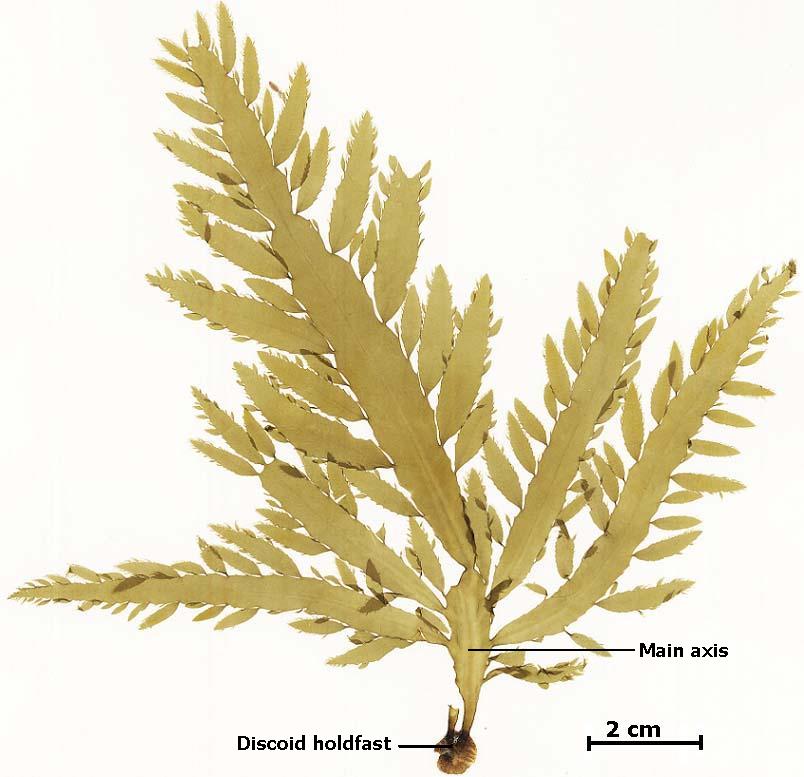
Flattened Acid Kelp
Morphology
Desmarestia ligulata full thallus
Desmarestia ligulata branches coming off a branch of the main axis. Fine opposite branching veins are barely discernable on both levels of branching.
Cross section of Desmarestia ligulata main axis showing midrib and epidermal, cortex, and medulla layers. |
||
Color: Desmarestia ligulata typically ranges from yellowish or greenish brown to dark brown in color. However, when stressed (e.g. desscication stress), D. ligulata typically undergoes some discoloration which can yeild a variety of colored bands including deep greens and blues. Size: It typically grows up to 80 cm high and up to 8mm thick in broadest branches Thallus structure: There is a single "main axis" of the plant typically 1-3 cm wide which gives rise to several close-set main branches in an opposite branching pattern. These branches are then further branched 2-3 times also in an opposite branching pattern. All levels of branches are flattened and uniform. (1) Branching veins: The midrib is usually very defined in the the main axis of mature plants with opposite veins branching from the midribs and leading to the branches. The second, third, and fourth order branches can appear stipate because of these veins. Finer opposite branching veins appear on all branching levels. Trichothallic growth: The tips and sides of branches and main axis may have a fringe along the margins of trichothallic growth filaments which appear as fine hairs or spines. Please refer to the trichothallic growth section of this website for more information about Demarestia trichothallic growth. (2) Holdfast: The main axis tapers down at the base leading to a distinct discoid holdfast which is often used for attaching to rocks or shells. Cellular Structure: A cross section of the flat thallus tissue reveals five tissue layers composed of two outer epidermal layers, two cortex layers and a center medulla layer. |
||
(1) Scagel, Robert F. . Guide to common seaweeds of British Columbia. p. 98. British Columbia: K.M MacDonald, 1972. (2) Abbott, Isabella A., and Hollenberg George J. . Marine Algae of California. p. 222-225. Stanford, CA: Standford University Press, 1976. |
